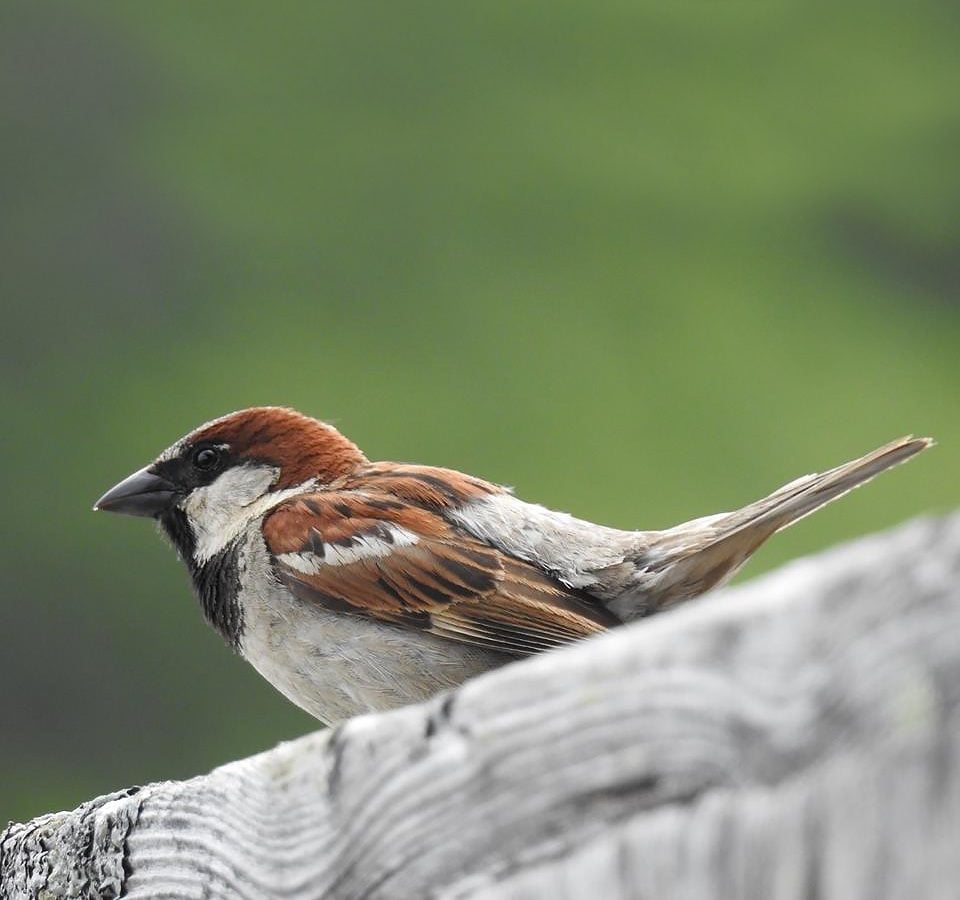Think telling sparrows apart is just not worth the effort? Our tips might change your mind. Identify sparrows by habitat, range, season, field marks and more!
It’s easy to lump all sparrow bird types together: “Yep, looks like a sparrow to me.” You can find at least 33 species of native sparrows across the country. And while their plumage won’t sweep you off your feet the way an oriole or a bluebird will, they’re still worth your time and attention.
Fall and winter bird feeding just wouldn’t be the same without these little brown birds. They liven up the feeder scene as they hop about, pecking in the tray, scratching for seeds beneath the feeder or gleaning the garden for leftover seeds. Another of their charming traits: All sparrows are songbirds. Their styles vary from the achingly sweet song of the fox sparrow to the unexpected buzz of the grasshopper sparrow to the melancholy phrases of the white-throated. But almost all are a delight to listen to.
Once you take a closer look, you’ll see that sparrows have a beauty all their own. Check out your feeder birds with binoculars, starting with the head, both to appreciate their subtle allure and to figure out who’s who.
Winter Sparrow Birds
These native sparrows are beloved feeder friends from fall through spring in most parts of the country; then they take off for breeding grounds to the north. Luckily for us, the birds begin singing before they leave our feeders in late spring. Discover 7 types of finch birds to look for in winter.
White-Throated Sparrow
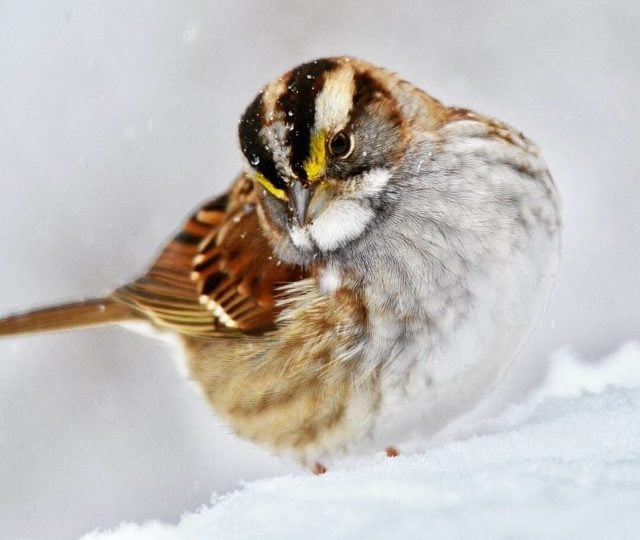
Abundant and familiar, the white-throated sparrow is easy to identify by its snowy bib. Until I spent some time in New England, I couldn’t figure out why people spell out the song Old Sam Peabody-Peabody-Peabody. Turns out the name is pronounced “Peabiddy” there—just as the sparrow says. White-throated sparrows are commonly spotted in the East, but are much less common in the West.
White-Crowned Sparrow
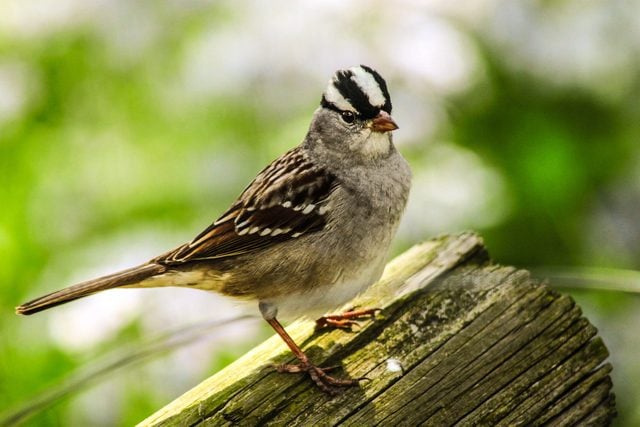
This dashing bird is an eye-catcher, its head topped with bold white stripes. This species leaves us about the time dandelions are turning to puffs: The parachute-topped seeds are a favorite food. Next time you see a white-crowned sparrow, consider the journey it’s about to embark on, which may take it to nesting grounds above the Arctic Circle. Time for an extra helping!
Discover more birds to look for in the snowy season.
Fox Sparrow
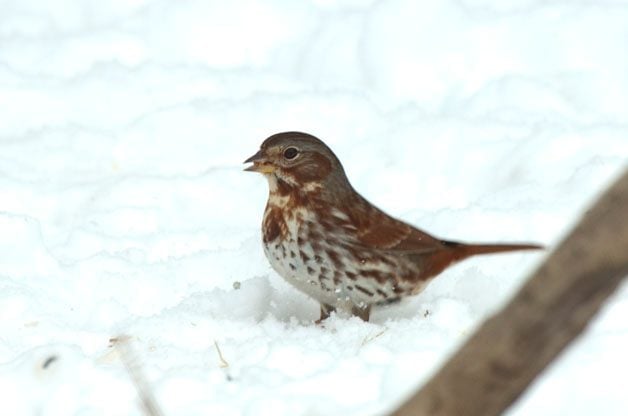
Even a brief visit from a fox sparrow—and that’s all we get in most places—is an occasion. Fox sparrows— among the largest and most beautiful of our native sparrows—spend the winter mostly in the southern states and go far north into Canada for the summer nesting season. They’re big, bold and a beautiful chestnut color (at least in the eastern U.S.) and, boy, can they sing! The key to identifying them is the mix of gray and foxy reddish brown, which is especially bright on the tail. In the West, their color is much duller, leaning toward gray in the Rockies and most of California, and brown along the coast.
American Tree Sparrow
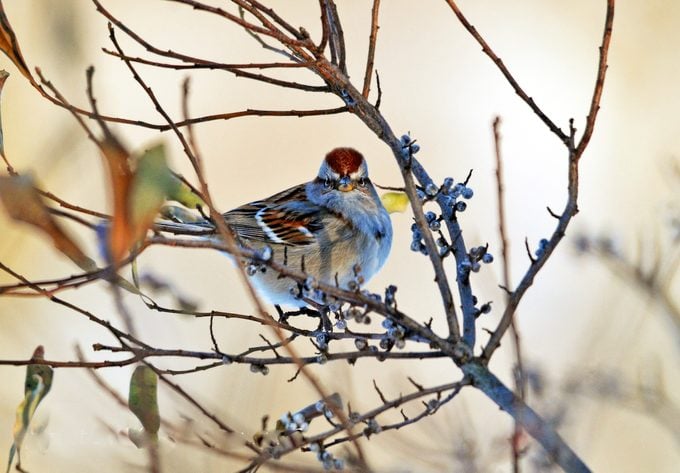
The American tree sparrow is one of the most common sparrows during the winter months in Midwest. Like the chipping sparrow, the tree sparrow also has a rufous cap, but it summers in northern Canada and Alaska.Learn how to attract birds in winter and spot more species.
Harris’s Sparrow
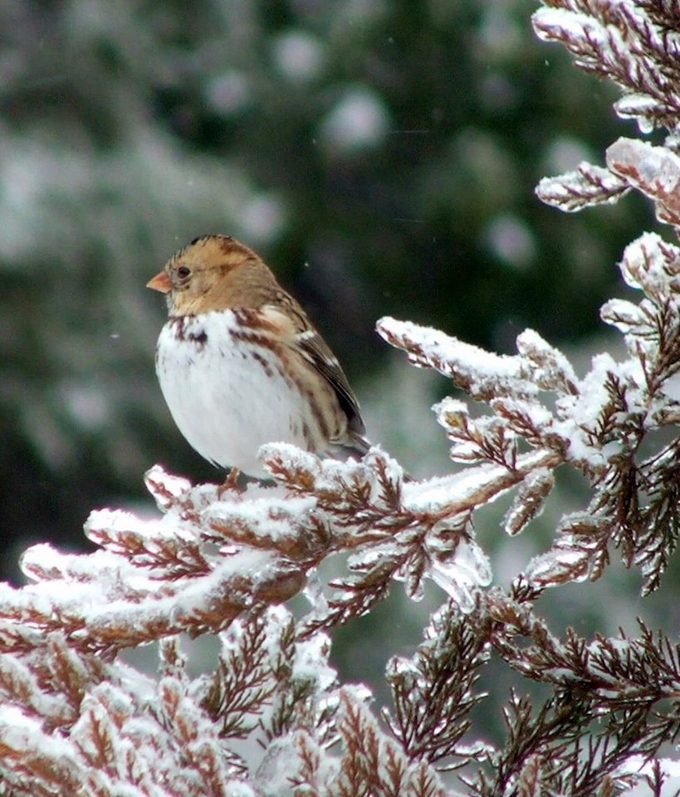
Watch flocks of winter sparrows and juncos for this species. According to the Kaufman Field Guide to Birds of North America, a stray Harris’s sparrow may turn up anywhere. In summer, they breed in Canadian spruce forests. Note the pink bill and white belly; adult birds have a black throat.
Golden Crowned Sparrow
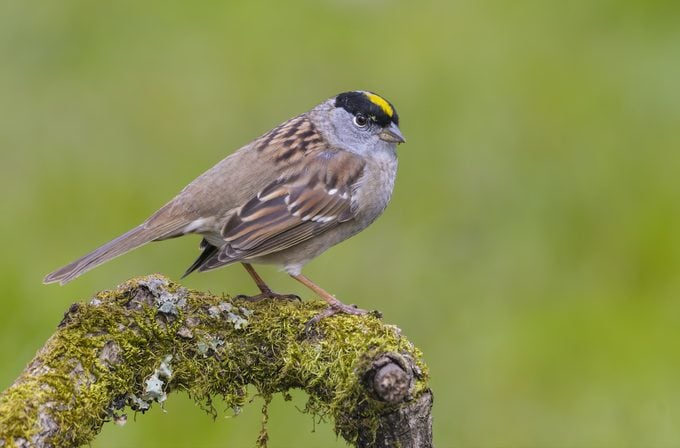
As their name implies, they’re cute little sparrows with bright yellow dots on the top of their heads. Their range is quite limited. Golden crowned sparrows spend summers in Alaska and western Canada, but are spotted in shrubby, weedy fields on the West Coast during spring and fall. Goldens stay on the ground, nibbling peanuts that other birds have dropped from the feeders.
Dark Eyed Junco
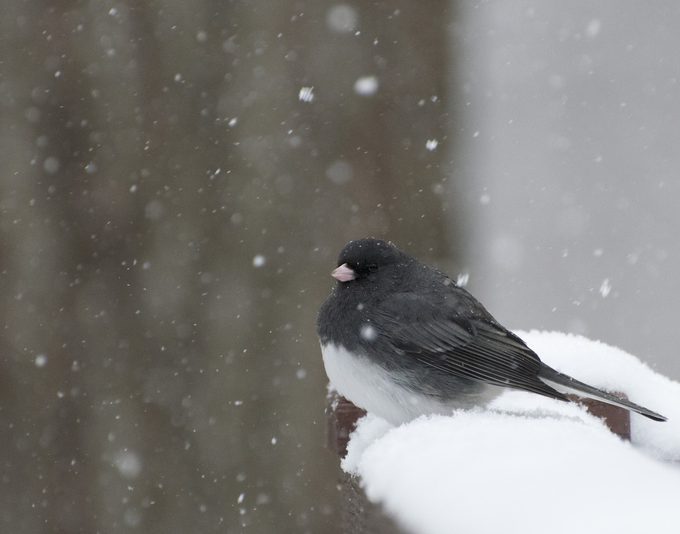
Black and white colored dark-eyed juncos are affectionately nicknamed snowbirds. These members of the sparrow family are sure signs that winter is just around the corner. Learn what juncos eat and how to attract them.
Spring Backyard Nesters
Many sparrow species may visit a feeder, especially during migration, but only a few are willing to call our backyards home. The sage sparrow, swamp sparrow, seaside sparrow and many others have specialized habitats that require more than the typical yard can offer.
Song Sparrow

The most widespread sparrow, this year-round species begins singing in late winter, a welcome herald of spring. It often nests in backyards, tucking its deep cup of grasses right on the ground in your flower bed or strawberry patch. Song sparrows vary so much in coloring across their range that you may think you’re seeing several different species. Once they open their mouths, though, they all sound the same.
Chipping Sparrow
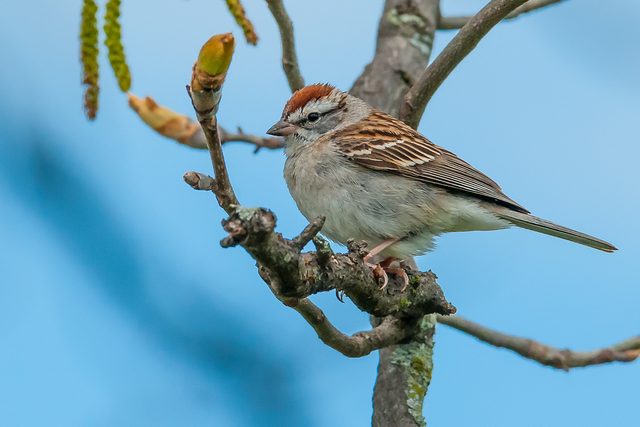
The monotone trill of the tiny chipping sparrow is easy to overlook in the spring chorus of birdsong. A resident during nesting season across most of the country, this little bird often hides its home in backyard shrubs. Watch for the cute little rusty-capped chippy hopping about on the ground to collect stray hairs from your dog to line its delicate nest.
Sparrows to Look for During Migration
Many native sparrows refuel at our feeders during migration, but not all become regulars. Keep an eye out for these little brown birds of the field when you’re hiking or driving. Depending on where you live, these widespread birds may be summer nesters or winter residents, or you may see them only as they’re passing through your area.
LeConte’s Sparrow
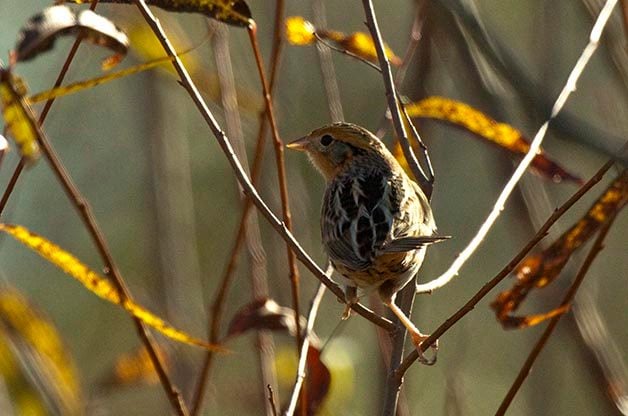
According to the Kaufman Field Guide, the Leconte’s sparrow is a shy bird that prefers damp fields and shallow marshes. Look for orange-buff face stripes and gray cheeks.
Nelson’s Sparrow
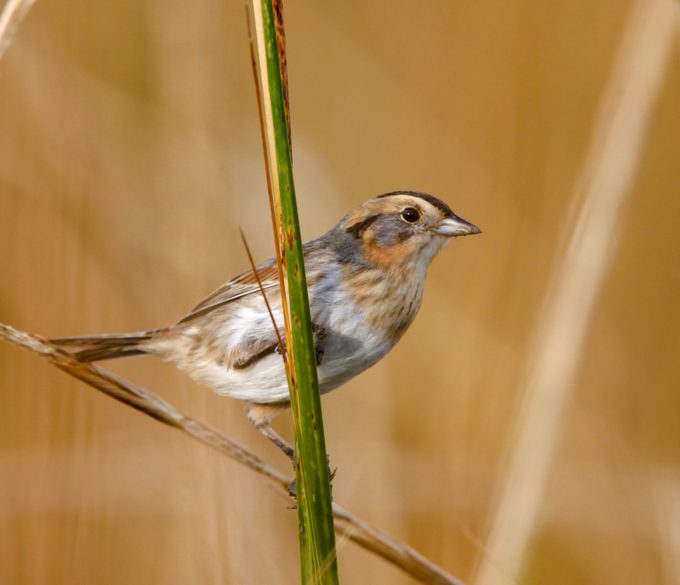
These sparrows migrate through the Midwest, and you have to really make an effort to head out to wetlands in order to find them. Many birders affectionately refer to these and Leconte’s as the orange sparrows. According to the Kaufman Field Guide, Nelson’s and saltmarsh sparrows were formerly considered one species.
Vesper Sparrow
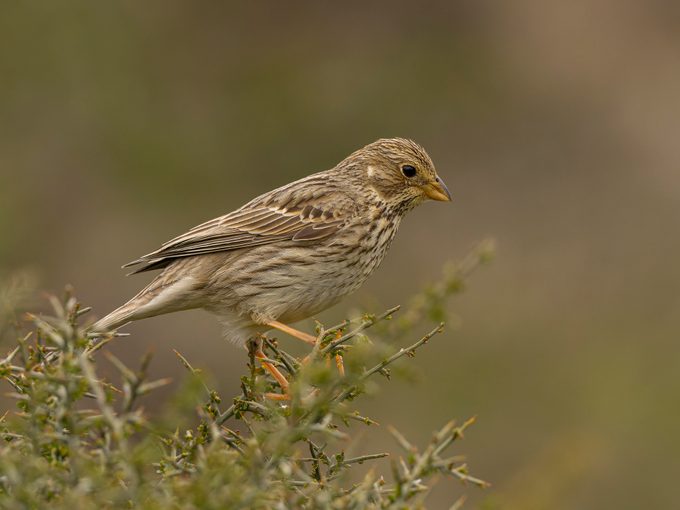
This bird looks like a bigger song sparrow until its white outer tail feathers give it away. Its lovely music, too, resembles the song sparrow’s: a few whistles to start, followed by a quickening trill. Naturalist and essayist John Burroughs named the bird after the sweet, peaceful music of a sunset church service.
Savannah Sparrow

Grasslands across the country—also known as savannas or savannahs—are where you’ll find this bird. It’s the quintessential sparrow: a small, streaky-breasted brown bird that lies low until it’s time to sing. Then, look for the savannah holding forth from a fence post, road sign or tree. Savannah sparrows have a short notched tail and a yellow stripe over the eye.
Lincoln’s Sparrow
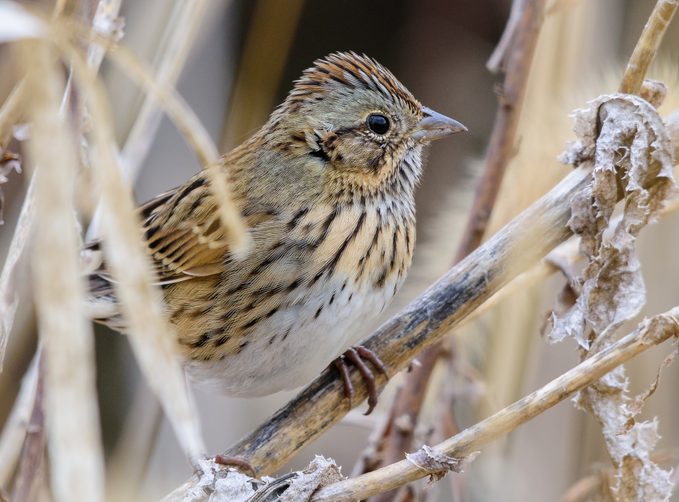
Lincoln’s sparrows are an uncommon species in the east, typically only spotted during migration. Its colors are helpful for checking this shy bird’s identity: The face is mostly gray, with reddish brown stripes along the sides of the crown. A buffy chest is marked with black streaks. Listen for a sweet, wrenlike song.
Black Throated Sparrow
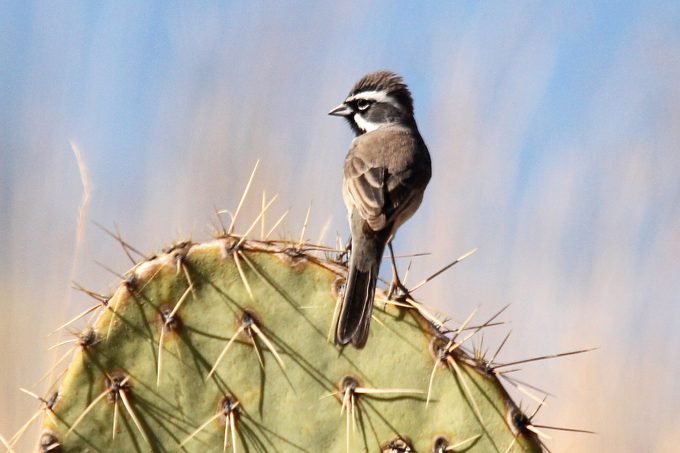
The sharply patterned black throated sparrow is a true desert bird, often going many days without water and living long distances from a water source. Black throated sparrows, found all over the Southwest, get enough moisture from consuming seeds and insects. Some migrate short distances, but they are year round residents along the southern U.S. border. Look for a black throat and mask with white eyebrow and whisker stripes.
Grasshopper Sparrow
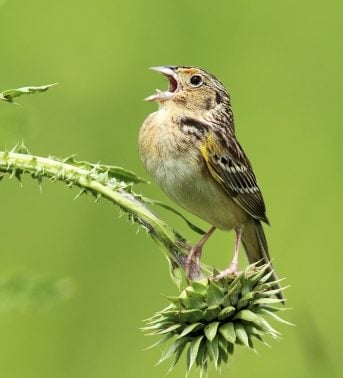
You’ll hear this small, shy sparrow way more often than you’ll set eyes on it. Why grasshopper? Two reasons: It lives in fields and pastures, and it makes a sibilant buzz very much like an insect’s. Like other grassland birds, its numbers are declining sharply, so look and listen while you can.
Non-Native Sparrows
House Sparrow
